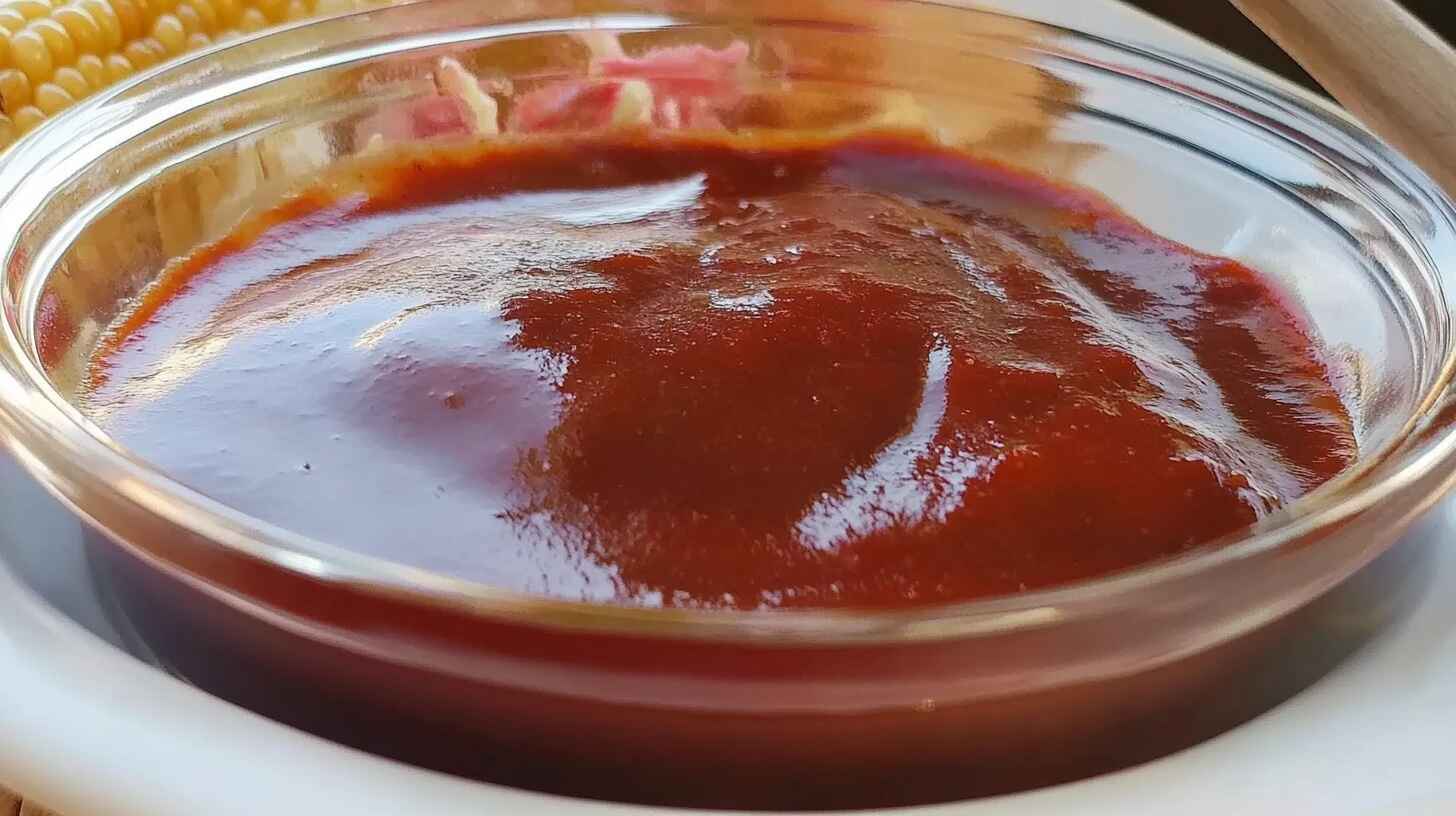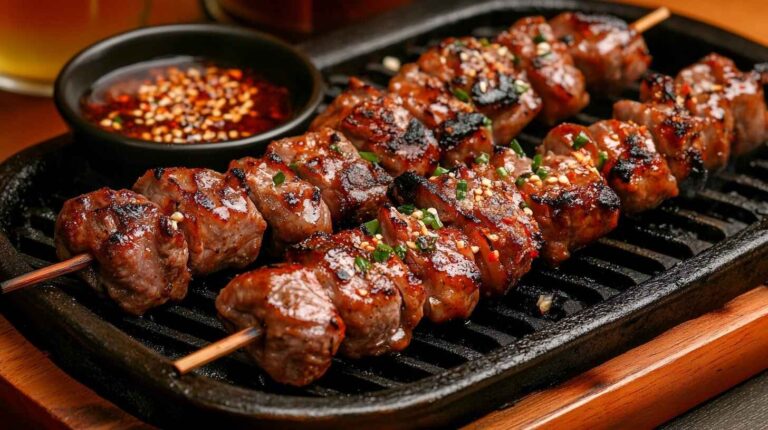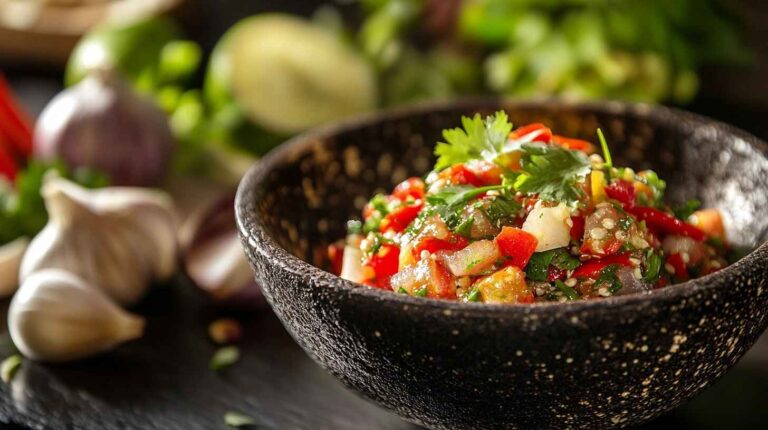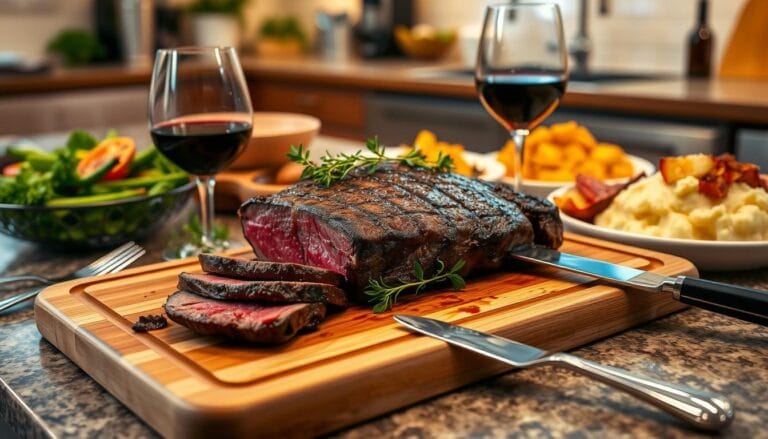Introduction: The Love for Bar-B-Q Sauce
Few things in life compare to the rich, smoky, and tangy flavors of a well-made barbecue sauce. Whether you’re slathering it over ribs, basting a brisket, or dipping crispy chicken wings, Bar-B-Q sauce is the heart and soul of great barbecue. But what makes a truly exceptional sauce? Is it the sweetness? The tang? The perfect balance of heat?
In this guide, we’re diving deep into everything there is to know about Bar-B-Q sauce—from its fascinating history to how to craft your own homemade version. You’ll also discover the best ways to use it, common mistakes to avoid, and expert tips to elevate your BBQ game. Ready to unlock the secrets of this legendary sauce? Let’s fire up the grill!
Table of Contents
“Great barbecue sauce isn’t just a condiment; it’s a story in a bottle—one that brings flavor, culture, and history to every meal.”
History and Origins of Bar-B-Q Sauce
The Evolution of Barbecue Sauces Across the World
Barbecue sauce has a long and smoky history, dating back centuries. While most people associate it with the Southern U.S., the idea of slow-cooked meat with flavorful sauces exists worldwide. Early civilizations in Africa, the Caribbean, and South America all had variations of slow-roasted meat seasoned with spices, vinegar, and fruit-based sauces.
But how did barbecue sauce as we know it today come to life? The roots can be traced back to the Spanish explorers, who introduced vinegar and citrus marinades to indigenous American cooking techniques. Over time, as different cultures mixed, barbecue sauce evolved into the regional varieties we love today.
How Barbecue Sauce Became a Staple in American Cuisine
In the United States, barbecue culture took off in the South, particularly in states like Texas, Tennessee, and the Carolinas. Pitmasters experimented with different ingredients, leading to distinct styles of Bar-B-Q sauce:
- Carolina-style: Vinegar-based with a tangy punch, perfect for pulled pork.
- Kansas City-style: Thick, tomato-based, and sweet with a smoky kick.
- Memphis-style: A balance of sweetness and tang, often used for dry and wet ribs.
- Alabama-style: A unique mayonnaise-based white sauce, used primarily for chicken.
These sauces became regional trademarks, influencing barbecue joints, home cooks, and even commercial brands. Today, barbecue sauce isn’t just for grilling—it’s a kitchen staple used for everything from dipping to slow-cooking.
The Different Types of Bar-B-Q Sauces
Not all barbecue sauces are created equal. Some are sweet and sticky, while others are tangy and fiery. Here’s a closer look at the most popular styles.
Tomato-Based BBQ Sauces (Kansas City, Memphis Style)
The most common type of barbecue sauce, tomato-based sauces are rich, slightly sweet, and smoky. Kansas City-style sauce, in particular, is known for its thick texture and balanced sweetness, thanks to molasses or brown sugar. Memphis-style sauces tend to be thinner, often with a vinegar kick.
Vinegar-Based BBQ Sauces (Carolina-Style)
If you prefer something tangy and less sweet, Carolina-style vinegar sauces are your best bet. These sauces are thin, acidic, and often infused with red pepper flakes, making them perfect for pulled pork or smoked meats.
Mustard-Based BBQ Sauces (South Carolina Style)
Originating from German settlers in South Carolina, mustard-based BBQ sauces offer a unique twist. The sharpness of mustard pairs beautifully with pork, cutting through the richness of the meat.
White Bar-B-Q Sauce (Alabama-Style)
Alabama-style white sauce is a lesser-known gem, but it’s gaining popularity. Made primarily with mayonnaise, vinegar, and black pepper, it’s creamy, tangy, and perfect for grilled chicken.
Specialty and International Barbecue Sauces
Beyond the American staples, international barbecue sauces bring unique flavors to the table:
- Korean BBQ Sauce: A mix of soy sauce, sesame oil, garlic, and gochujang for a spicy-sweet profile.
- Argentinian Chimichurri: Not a traditional BBQ sauce but a vibrant herb-based sauce used for grilled meats.
- Jamaican Jerk Sauce: Infused with Scotch bonnet peppers, allspice, and citrus, creating a fiery yet flavorful taste.
“The beauty of barbecue sauce is its versatility—every culture, every region has its own spin, making it a universal favorite.”
How to Make the Perfect Homemade Bar-B-Q Sauce
Store-bought sauces are convenient, but nothing beats the depth of flavor you can achieve with homemade BBQ sauce. Plus, you get complete control over the ingredients, ensuring a perfect balance of sweetness, tang, and spice.
Key Ingredients and Their Roles
Before we dive into the recipe, let’s break down the key components:
| Ingredient | Purpose |
|---|---|
| Tomato Base (Ketchup or Tomato Paste) | Provides richness and sweetness |
| Vinegar | Adds tang and balances the sweetness |
| Brown Sugar or Honey | Sweetens the sauce and enhances caramelization |
| Worcestershire Sauce | Deepens umami flavors |
| Smoked Paprika | Brings out the smoky flavor |
| Garlic & Onion Powder | Enhances the savory notes |
| Black Pepper & Cayenne | Adds heat and complexity |
Step-by-Step Recipe for a Classic BBQ Sauce
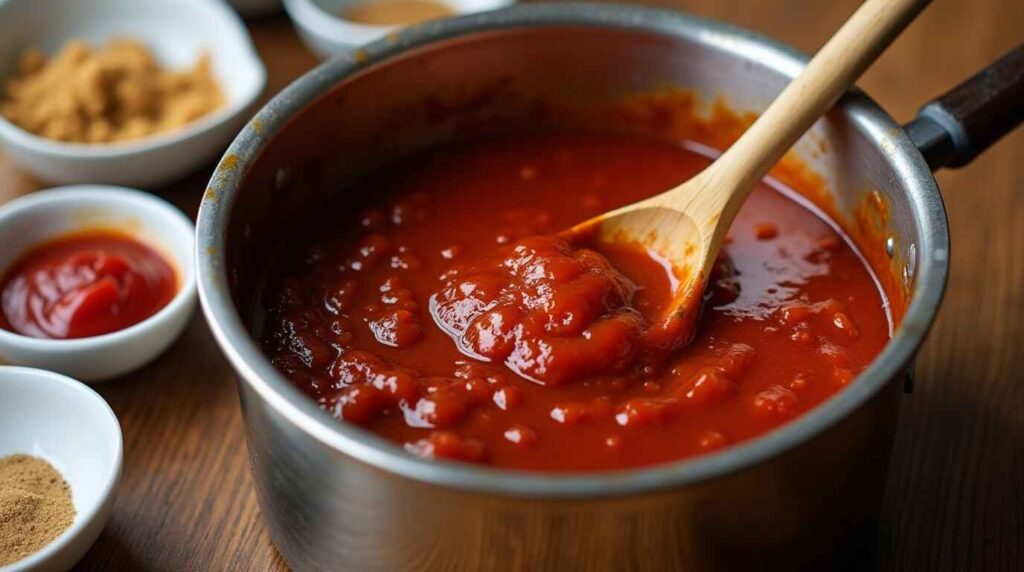
Ingredients:
- 1 cup ketchup
- 1/4 cup apple cider vinegar
- 1/4 cup brown sugar
- 1 tbsp Worcestershire sauce
- 1 tsp smoked paprika
- 1/2 tsp garlic powder
- 1/2 tsp onion powder
- 1/4 tsp cayenne pepper (optional for heat)
- Salt and black pepper to taste
Directions:
- In a saucepan over medium heat, combine all ingredients.
- Stir well and bring to a gentle simmer.
- Cook for about 10-15 minutes, stirring occasionally, until the sauce thickens.
- Adjust seasoning as needed—add more vinegar for tang, sugar for sweetness, or cayenne for heat.
- Let cool and store in an airtight container.
And just like that, you have a homemade BBQ sauce that’s perfect for grilling, marinating, or dipping!
“A great BBQ sauce should be like a symphony—each ingredient playing its part in perfect harmony.”
Common Problems When Making Bar-B-Q Sauce (And How to Fix Them)
Even the most experienced pitmasters sometimes run into issues when making barbecue sauce. Whether it’s too thin, too sweet, or just not hitting the right flavor notes, here are some common problems and simple solutions.
Sauce Too Thin or Too Thick? Adjusting the Consistency
One of the most common complaints is that BBQ sauce is either too runny or too thick. Here’s how to fix it:
- If your sauce is too thin: Simmer it on low heat for a few extra minutes to let the moisture evaporate. If you need a quicker fix, add a teaspoon of cornstarch mixed with water.
- If your sauce is too thick: Stir in a small amount of vinegar, broth, or water until it reaches your desired consistency.
Too Sweet, Too Tangy, or Too Spicy? Balancing Flavors
BBQ sauce should be a perfect balance of sweet, tangy, smoky, and spicy flavors. If one element is overpowering, here’s how to fix it:
- Too sweet? Add a splash of vinegar or a squeeze of lemon juice to cut through the sweetness.
- Too tangy? Stir in a bit more brown sugar or honey to balance the acidity.
- Too spicy? Add a touch of honey, sugar, or even a little extra tomato sauce to tone down the heat.
“Great BBQ sauce is all about balance—like a dance between sweet, smoky, and spicy.”
How to Fix a Bitter or Burnt-Tasting Sauce
Sometimes, BBQ sauce can develop an unpleasant bitter taste. This usually happens when it’s cooked at too high a temperature, causing the sugars to burn. To fix this:
- Add a small amount of honey or maple syrup to mellow out the bitterness.
- Try incorporating a bit of unsalted butter—it smooths out harsh flavors.
- If it’s really overpowering, mix in a little more tomato paste to mask the bitterness.
Best Uses for Bar-B-Q Sauce in Cooking
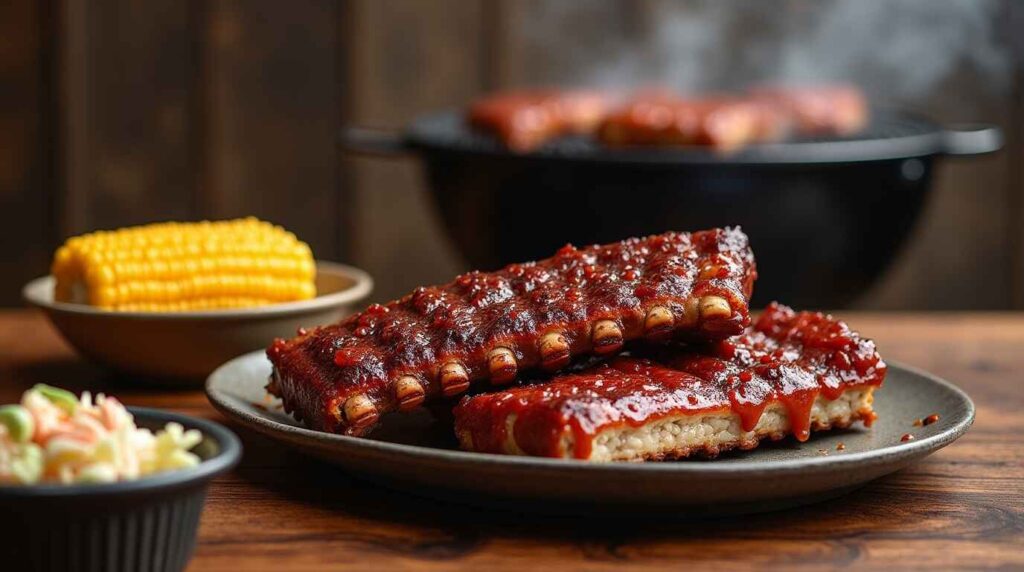
BBQ sauce isn’t just for slathering on ribs! There are tons of ways to use it in everyday cooking. Here are some of the best applications.
Classic BBQ Ribs, Chicken, and Brisket
Nothing beats the smoky, caramelized glaze of BBQ sauce on grilled meats. Here’s a quick guide:
- Ribs: Slow-cook the ribs, then baste them with BBQ sauce in the final 15 minutes of grilling.
- Chicken: Brush BBQ sauce onto grilled chicken in the last few minutes to prevent burning.
- Brisket: Some prefer dry rubs, but a good BBQ sauce can add another layer of flavor.
Marinating vs. Basting: When and How to Apply Sauce
When should you apply BBQ sauce—before, during, or after cooking? The answer depends on the dish:
| Method | When to Apply BBQ Sauce |
|---|---|
| Marinating | Let meat soak in the sauce for at least 2 hours before cooking. |
| Basting | Brush sauce onto meat in the final 10-15 minutes of grilling. |
| Dipping | Serve extra BBQ sauce on the side for added flavor. |
Unique Recipes Using BBQ Sauce: Burgers, Pizza, and More
BBQ sauce isn’t just for grilling! Here are a few creative ways to use it:
- BBQ Burgers: Mix BBQ sauce into ground beef before grilling for an extra juicy burger.
- BBQ Chicken Pizza: Swap tomato sauce for BBQ sauce on your pizza base, then top with grilled chicken and red onions.
- BBQ Pulled Pork Sandwiches: Slow-cook pork in BBQ sauce for a mouthwatering pulled pork sandwich.
Store-Bought vs. Homemade: Which One is Better?
Is homemade always better than store-bought? Let’s compare.
Comparing Ingredients, Taste, and Health Benefits
Store-bought BBQ sauces are convenient, but they often contain added preservatives, artificial flavors, and excess sugar. Homemade sauces, on the other hand, allow you to control what goes into them.
The Best Store-Bought BBQ Sauce Brands in 2024
If you’re short on time, these top-rated BBQ sauces are worth trying:
- Sweet Baby Ray’s: A classic, well-balanced sauce.
- Stubbs: A tangy, less sugary alternative.
- Killer Hogs BBQ Sauce: A bold and smoky option.
Preserving and Storing Bar-B-Q Sauce for Freshness
How long does BBQ sauce last? Proper storage can make all the difference.
How Long Does BBQ Sauce Last? Shelf Life Explained
Homemade BBQ sauce lasts:
- Up to 2 weeks in the fridge.
- Up to 3 months if frozen.
Store-bought sauces last longer due to preservatives but should still be refrigerated after opening.
Freezing vs. Refrigerating Homemade BBQ Sauce
Want to extend the life of your sauce? Freezing is a great option. Just pour it into an airtight container or ice cube trays for easy portioning.
Health Benefits and Concerns of BBQ Sauce
While delicious, BBQ sauce can sometimes be high in sugar and sodium. Here’s what to watch for.
Is Barbecue Sauce Healthy? Nutrition Facts and Ingredients to Watch
| Nutrient | Amount per Serving |
|---|---|
| Calories | 50-70 kcal |
| Sugar | 10-15g |
| Sodium | 200-400mg |
| Fat | 0-2g |
Low-Sugar and Keto-Friendly BBQ Sauce Alternatives
If you’re watching your sugar intake, try these alternatives:
- Use Monk Fruit or Stevia instead of sugar.
- Opt for Vinegar-Based Sauces which are naturally lower in sugar.
Fun Facts and Trivia About BBQ Sauce
Did you know?
- The oldest recorded BBQ sauce recipe dates back to the 17th century!
- South Carolina is the only U.S. state where mustard-based BBQ sauce is the standard.
- More than 90% of Americans keep a bottle of BBQ sauce in their kitchen.
Conclusion: Mastering the Art of Barbecue Sauces
From its deep historical roots to the countless ways you can use it, BBQ sauce is more than just a condiment—it’s a culinary tradition. Whether you love a thick Kansas City-style sauce or a tangy Carolina vinegar blend, there’s something for every BBQ lover. Ready to get saucy? Grab your ingredients and start experimenting in your own kitchen!
“A good BBQ sauce turns ordinary meals into extraordinary feasts.”
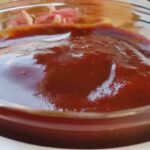
How to Make the Best Bar-B-Q Sauce: Step-by-Step & Flavor Hacks
- Total Time: 20 minutes
- Yield: 2 cups (enough for several meals) 1x
- Diet: Gluten Free
Description
This classic homemade Bar-B-Q sauce is the perfect balance of sweet, tangy, and smoky flavors. Made with simple pantry staples, it’s ideal for ribs, chicken, brisket, burgers, and more. Whether you love Kansas City-style, Carolina vinegar-based, or a smoky Texas twist, this versatile sauce can be customized to suit your taste.
Ingredients
Base Ingredients:
- 1 cup ketchup
- ¼ cup apple cider vinegar
- ¼ cup brown sugar
- 2 tbsp honey or maple syrup
- 1 tbsp Worcestershire sauce
- 1 tbsp Dijon mustard
Spices & Seasonings:
- 1 tsp smoked paprika
- ½ tsp garlic powder
- ½ tsp onion powder
- ½ tsp black pepper
- ½ tsp salt
- ¼ tsp cayenne pepper (optional for heat)
Liquid Adjustments (Optional for Consistency):
- ¼ cup water (for thinner sauce)
- 1 tbsp cornstarch mixed with 1 tbsp water (for thicker sauce)
Instructions
1️⃣ Mix Ingredients
- In a saucepan over medium heat, whisk together ketchup, vinegar, brown sugar, honey, Worcestershire sauce, and mustard.
2️⃣ Add Seasonings
- Stir in smoked paprika, garlic powder, onion powder, black pepper, salt, and cayenne (if using).
3️⃣ Simmer & Thicken
- Bring the mixture to a simmer, stirring occasionally for 10-15 minutes until the sauce thickens. If you need a thicker consistency, mix 1 tbsp cornstarch with 1 tbsp water and stir it in.
4️⃣ Taste & Adjust
- Adjust flavors as needed:
- Add more vinegar if it’s too sweet.
- Add more honey or sugar if it’s too tangy.
- Add a pinch of salt for balance.
5️⃣ Cool & Store
- Let the sauce cool before transferring to an airtight container. Store in the refrigerator for up to 2 weeks or freeze for 3 months.
Notes
- For a spicier sauce, increase the cayenne pepper or add hot sauce.
- For a smokier flavor, add ½ tsp liquid smoke.
- For a Carolina-style sauce, reduce the ketchup and add more vinegar.
- For a sweeter sauce, add more honey or brown sugar.
- Great for marinating, basting, dipping, and glazing meats!
- Prep Time: 5 minutes
- Cook Time: 15 minutes
- Category: Sauces & Condiments
- Method: Simmering
- Cuisine: American
Nutrition
- Serving Size: 2 tbsp
- Calories: 50 kcal
- Sugar: 10g
- Sodium: 250mg
- Fat: 0.5g
- Saturated Fat: 0g
- Unsaturated Fat: 0g
- Trans Fat: 0g
- Carbohydrates: 12g
- Fiber: 0.5g
- Protein: 0.5g
- Cholesterol: 0mg

